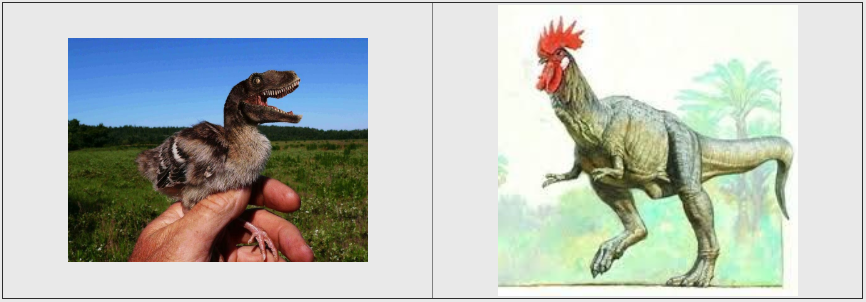1 Week 1: Welcome
Welcome to the Story of Dinosaurs!!!

Getting Started in this Course – Week 1
Online Obligations: This is a mostly asynchronous course, but you will have to turn in certain things in by a specific date. Meetings such as office hours or optional synchronous tutorials/lectures will be conducted through our University’s online meeting platform.
Course Information: A GEOL 1003 Syllabus Template is available for educators to modify for courses using this text. Professors will appreciate students reviewing this document or their own course’s modified syllabus to be sure you understand the obligations of this course. As originally presented, students were expected to complete all work for that week by midnight [Sunday].
Details: Watch the video below for information on how to get started in this course. You may follow along to the PowerPoint here: 1a_Course Expectations
Video Introductions!
In this class, we will be communicating a lot through short video posts. To do this we will be using our course discussion board! Your assignment this week is to create a 30-second video introducing yourself .
First Things First!
Each week you will begin by taking a pre-quiz where your answers will not be counted against you if they are incorrect. If you complete the quiz you will receive full credit. Take Weekly Quiz 1a before you move on.
Weekly Quiz 1a
Something that is unique to the first week of this class is the Entry Survey. This will be used to measure how much you know and if you change any of your perceptions through the completion of this course. there are no right or wrong answers to this 100pt survey. Once you complete it you will receive the full 100pts.
Next, we will move on to the content for the week. This class will be conducted in a mostly asynchronous format. You will be interacting with the material and your classmates mostly through video messages.
To work our way through the content you will watch lecture videos of me and other resources from all around the internet. As you scroll through the home page watch the videos and fill in the Notes with Gaps. It is highly recommended that you fill out the Notes with Gaps as you are able to use ONLY those on ANY tests in this class! Here are the Week 1 Notes with Gaps for the first week and the 1b Scientific Method powerpoint.
To start, let’s discuss the Scientific Method a bit:
What is a Dinosaur?
These images are meant to be humorous, but have you ever really taken a good look at a bird’s feet? Every time I do I see dinosaurs!
BUT
What makes a dinosaur a dinosaur? Let’s have a look at a few models to see if you can find any common characteristics.
Take the Dinosaur? Yes or No? survey here before going down to the lecture video below.
Dinosaur? Yes or No?
So, how did the survey go? As you go on with the Lecture Videos, be sure to fill out your Week 1 Notes with Gaps and follow along on the What is a Dino PowerPoint.
[Embed polling resource window asking ‘what terms can be used to define a dinosaur? (2-3 words only)]
So, now that you know a little bit about the grouping of dinosaurs based on their hip structures, color the 3 hip bones in the dinosaur schematics in your Notes with Gaps. use that information to group the dinosaurs in the Exploring Dinosaur Phylogeny activity.
Candy Cladistics
This exercise is intended to get you to think about how things are grouped. So, go to your kitchen and get some food items. it would be good to ensure that at least some have shared characteristics. I’m going to use candy in the video, but you can use whatever you want. Gather your items and follow along with the video, when you are done take a photo of your food cladogram and submit it to your course LMS.
Wrap-up Candy Cladistics
Look Here!
- Create a 30 second video introducing yourself!
- Weekly Quiz 1a – The first thing you will do every week is to complete the pre-quiz. You will get full credit for participating.
- Entry Survey- 100 points and is participation based.
- Dinosaur? Yes or No? survey
- Exploring Dinosaur Phylogeny Activity
- Food Cladogram
- Weekly Quiz 1b – At the end of every week, you will complete a graded quiz based on the week’s topic. This will be graded based on your answers. This quiz is open for you to take as many times as you want
Please note: there are ~2 extra exercises in this week because it is the first week. Later weeks won’t be quite as packed.
Dr. Ashley Burkett
Assistant Professor of Geology
ashley.burkett@okstate.edu
Hello all! I am excited to have you exploring this resource! I appreciate all feedback from content and delivery to typos and broken links. Please feel free to contact me via email! I would love to hear from you.
A Little About the Author
I am a paleontologist specializing in single-celled invertebrates, that make a shell about the size of a grain of sand, called foraminifera. These organisms are still around in modern oceans today and have existed since the first hard parts appeared in the fossil record about 500 million years ago. They also were around and experienced some major changes in their shell morphologies while dinosaurs were roaming the earth! Because I study these marine organisms I get to go to sea once or twice a year to collect samples. I love being at sea and am very passionate about foraminifera!
I am a faculty member in the Boone Pickens School of Geology. In addition to this course, I teach GEOL 1224: Evolution of the Earth, and GEOL 3103: Paleontology.



